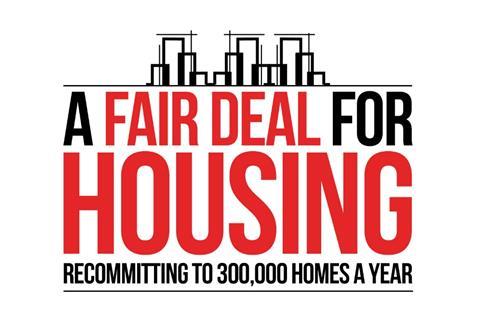Rural exception sites allow land for housing developments to be provided at below market value
Only 17% of a local authorities made use of rural exception sites in 2021/22, according to new research by University College London, on behalf of the Rural Housing Network.

Out of 145 rural local authorities, only 25 used rural exception sites to deliver affordable homes between 2021 and 2022, resulting in 546 homes being built.
However, according to UCL’s research, nearly 3,000 affordable homes could have been developed if the vast majority of rural councils had utilised rural exception sites during that period, with the NHF referring to this as “a massive, missed opportunity”.
The 17% figure refers to local authorities classed as ‘mainly rural’, ‘largely rural’ or ‘urban with significant rural’.
Rural Exception Sites are small parcels of land situated on the outskirts of existing rural settlements.
>> See also: NHF calls for social housing development funding overhaul
>> See also: Places for People’s takeover of small rural housing association approved
These sites allow land to be allocated for residential development below market value, provided that the resulting housing is affordable to local residents.
Introduced in 1991, a recent study conducted by UCL on behalf of the Rural Housing Network indicates that these sites are still not being fully utilised.
The Rural Housing Network, which includes the English Rural Housing Association, Hastoe Housing Association, Trent & Dove Housing Association, and the National Housing Federation, funded this research.
As part of the research, a nationwide survey of local planning authorities was conducted.
The survey revealed that common obstacles to delivering affordable homes through Rural Exception Sites included limited resources in planning departments, rising land costs, outdated development plans, and local opposition.
The report calls for updates to the National Planning Policy Framework and additional funding for rural planning authorities to effectively oversee and support rural exception site projects.
In June last year, the government announced the creation of a new network of rural housing enablers to act as “honest brokers between developers and communities”.
Backed by £2.5 million of funding, the government said that the role of rural housing enablers will be to identify sites with local support for development that is in keeping with the local area.
The UCL research said that where rural housing enablers exist and are governed effectively, the delivery of rural exception sites is “systematically higher”.
Nick Gallent, lead UCL researcher, said: “The under-use of Rural Exception Sites by some councils is a lost opportunity. By fostering knowledge, planning support, community partnership, and the dedication of Rural Housing Enablers, we can significantly enhance these vital resources for affordable rural housing.”
Gallent also emphasised the crucial role of landowners in making rural land available for community-focused housing.
Kate Henderson, chief executive of the National Housing Federation, said: “The severe shortage of new affordable homes is felt acutely in rural communities, with local businesses and services put at risk when people can’t afford to live in their local area. When a shop, or a pub or a post office closes in a rural area, it has a negative impact on the community.”
“The experiences of so many rural communities offer stark examples of what happens when the housing market doesn’t meet local need. This research highlights a key route to help solve this issue. However, it also highlights the immense resource and funding pressures on local authorities across the country. We are urging policy makers and stakeholders to consider these recommendations and work together to help tackle the rural housing shortage.”
A Fair Deal for Housing

Housing Today’s A Fair Deal for Housing campaign is calling for the government to launch a review to look how to increase affordable housing delivery to 100,000 homes a year.
This should consider overhauling existing funding for affordable housing so that a more ambitious programme can be delivered.
The report suggests the review could look at grant rates for affordable housing, a longer-term rent settlement for social housing providers, a time-limited stimulus package to counteract the high cost of private funding and at mechanisms to lever in more institutional finance for ‘for-profit’ registered providers.
The campaign is also caling for measures to reform the planning system, boost private housing delivery and make regeneration easier.











No comments yet